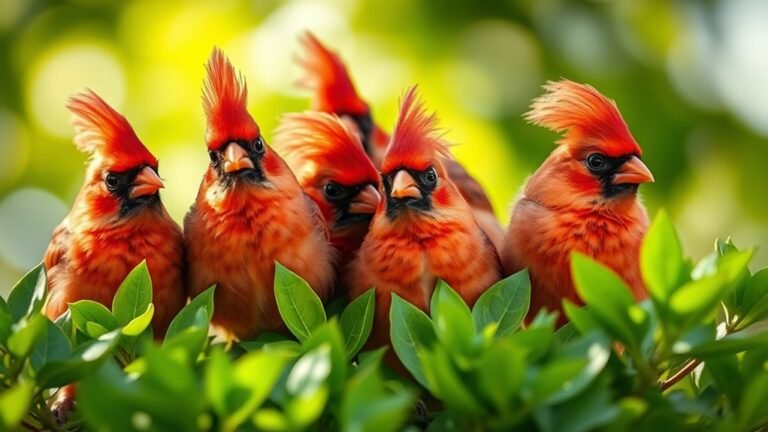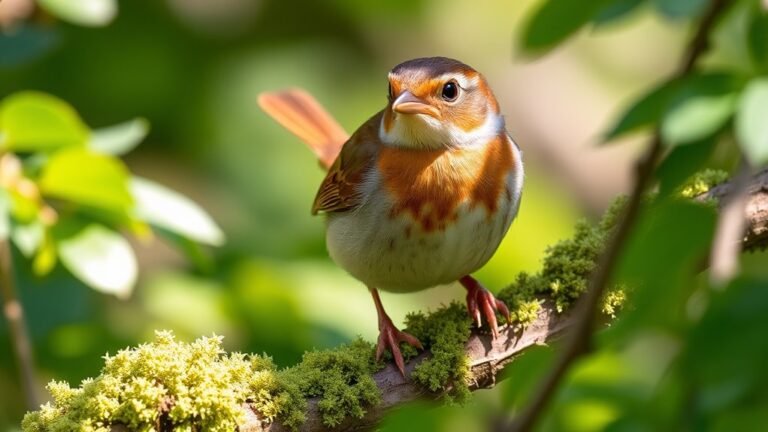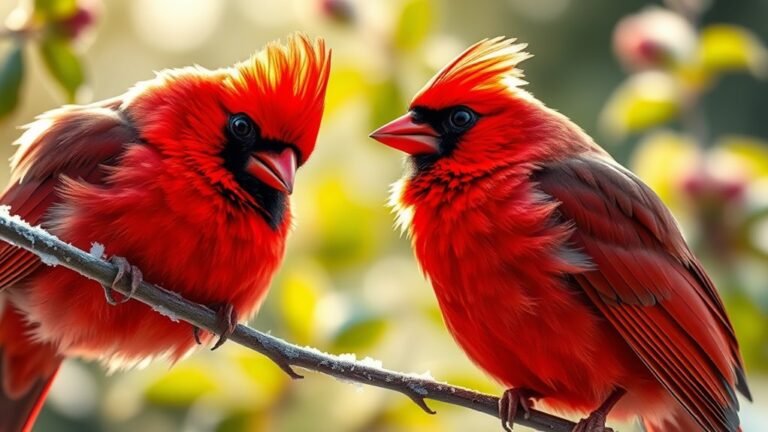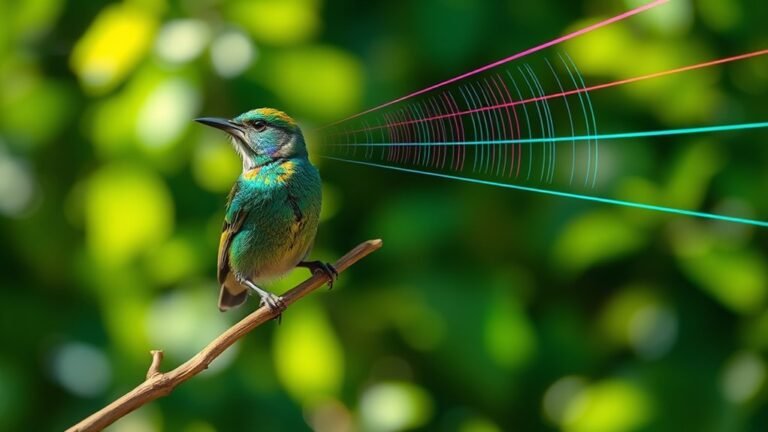Birds That Look Like Blue Jays: Colorful Mimics of the Avian World
Birds that look like blue jays have similar physical features and behaviors. They include the Eastern Bluebird and the Steller's Jay. Each bird has unique traits that help them survive. Learning about their roles in nature and their appearances can deepen understanding of bird diversity. What traits and behaviors might affect how they interact in shared environments?
Key Takeaways
Eastern Bluebirds are often confused with blue jays. They have blue feathers but a calmer presence, typically found in open fields.
Steller's Jays have bright blue and black feathers. They live in mountainous areas and are known for their bold and social behavior.
Indigo Buntings show brilliant blue feathers that shine in sunlight. They usually stay in shrubby areas during their active breeding season.
Scrub Jays have a mixture of bright blue and gray. They are intelligent birds and often forage socially in various habitats across the western U.S.
Eurasian Jays feature bright blue, red, and gray feathers. They engage in playful behaviors and show intelligence in different forest habitats.
These birds, while distinct, all share similar vibrant colors that can mimic the blue jay's appearance.
Eastern Bluebird: A Subtle Blue Rival
The eastern bluebird is often confused with the brighter blue jay. This beautiful bird attracts birdwatchers with its simple elegance.
You can find the eastern bluebird in open fields, meadows, and along woodland edges, where it searches for food. Its diet mainly includes insects, such as grasshoppers and beetles, as well as berries in the fall and winter.
The eastern bluebird adapts well to different environments, making it a favorite among nature lovers. By learning about their habitats and diet, you can appreciate this lovely species even more.
Look for them perched on fence posts or flying gracefully through the air, showcasing the beauty of nature.
Steller's Jay: The Bold and Beautiful Mimic
The Steller's jay is often confused with a blue jay, but it has distinct features. Its vibrant blue and black feathers stand out in mountainous areas, especially in coniferous forests.
The Steller's jay is bold; it often raids nests and forages for food with squirrels. These birds are intelligent and social, forming close family groups that display engaging interactions.
They thrive in various elevations, adapting well from low canyons to high mountain slopes. Observing Steller's jays connects you with nature and showcases their survival and community behaviors in the bird world.
Indigo Bunting: Dazzling Shades of Blue
The indigo bunting is a striking bird known for its bright blue feathers that shine in the sun.
It mainly lives in thick, shrubby areas across North America, such as brushy fields and forest edges. Watching this bird shows its lively movements and beautiful songs, especially during breeding season when males mark their territories.
Indigo buntings often feed together, which highlights their social behavior. They're adaptable birds, migrating long distances to find the best places to nest and search for food.
Learning about the indigo bunting's behavior and preferred habitats helps you appreciate these colorful birds and connect with nature.
Scrub Jay: The Western Counterpart
When you see a scrub jay in the wild, its bright blue and gray feathers stand out. This bird is a common sight in the western United States.
Scrub jays live in various habitats, like sagebrush areas and oak forests. They show great adaptability to their environment.
These birds are smart and social. They often look for food in small groups.
Scrub jays can solve problems and use tools to get insects and seeds. They make different sounds to communicate, which helps keep their groups together.
Watching these behaviors helps you appreciate their important roles in nature.
Eurasian Jay: Transatlantic Lookalike
The Eurasian Jay is a colorful bird that attracts birdwatchers. It lives in various habitats in Eurasia, especially in woodlands and parks where it can find food and shelter.
The jay displays bright colors including blue, red, and gray, which make it unique among birds.
This bird shows high intelligence. It hides food in different places to eat later, a behavior similar to its North American relatives. Socially, Eurasian Jays are often seen in pairs or small groups, engaging in playful activities.
The Eurasian Jay's vibrant colors and lively behavior make it an exciting bird for enthusiasts to observe.
Frequently Asked Questions
Do Blue Jays Have Any Natural Predators?
Yes, blue jays have natural predators. Their main threats include hawks and raccoons. Blue jays stay alert, especially during nesting, as predators can significantly affect their ability to raise young. This vigilance helps them protect their nests and maintain their populations.
What Is the Diet of Blue Jays and Their Lookalikes?
Blue jays have varied diets due to their opportunistic foraging habits. They mostly eat nuts, seeds, fruits, and insects. These feeding strategies show how blue jays adapt and contribute to local ecosystems. By understanding their diet, you can better appreciate their role in nature.
How Can I Attract These Birds to My Backyard?
To attract blue jays and similar birds, you should set up bird feeders filled with peanuts and seeds. Additionally, plant native flowers and shrubs that offer natural food sources. This will help create a welcoming environment for these birds, allowing you to enjoy their presence in your backyard.
Are Blue Jays Migratory or Resident Birds?
Blue jays are mostly resident birds, meaning they do not migrate long distances. They tend to stay in their habitats year-round. However, some blue jays may move short distances in search of food, especially when it becomes scarce. This behavior shows that their migration patterns can change based on environmental conditions.
What Are the Vocalizations of Blue Jays and Their Mimics?
Blue jays make a variety of sounds to communicate. They use sharp calls, whistles, and mimic the sounds of other birds. This vocal mimicry helps them interact socially and improve their chances of survival in different environments. Their diverse vocalizations add to their presence in nature and make them interesting birds to observe.

Ava is a bird enthusiast and nature lover who has spent countless hours observing and learning about the fascinating world of birds. With a passion for sharing her knowledge and inspiring others to appreciate the beauty of birds, Ava writes about her experiences and insights on avianadmirer.com.







